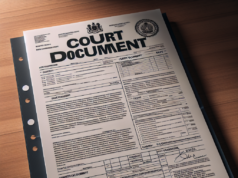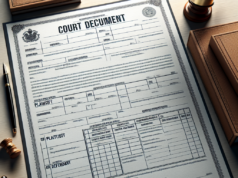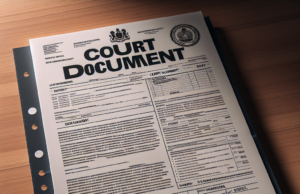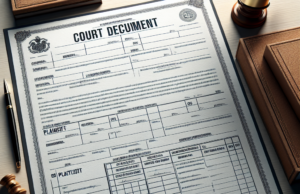
HAWAII DIVORCE LAWS & REGULATIONS UPDATE 2023
A DECADE OF CHANGE: AN UPDATED OVERVIEW OF HAWAII’S DIVORCE LAWS AND REGULATIONS TIMELINE (2013-2023)
Over the last ten years, Hawaii’s divorce laws have undergone significant revisions, reflecting the state’s commitment to modernize its legal landscape while prioritizing fairness, transparency, and the well-being of families navigating divorce. From child custody to spousal support, these changes underscore Hawaii’s dedication to adapting to the evolving needs of its residents. This article provides an overview of key updates in Hawaii’s divorce laws and regulations from 2013 to 2023, presented in a succinct bullet point format:
2013 – Equitable Property Distribution Clarified:
– Hawaii refines property distribution rules to ensure a fair division of marital assets.
– Factors like contributions, length of marriage, and individual needs are considered.
2014 – Child Custody and Visitation Enhancements:
– Introduction of child custody and visitation guidelines emphasizing the best interests of the child.
– Shared parenting arrangements are encouraged to ensure meaningful involvement of both parents.
2015 – Alimony Guidelines Established:
– Hawaii implements alimony guidelines to provide consistent and transparent spousal support determinations.
– Factors including marriage duration, financial situations, and earning potential are taken into account.
2016 – Support for Military Families:
– Special provisions are introduced to address the unique challenges of military divorces.
– Consideration is given to deployment, benefits, and other factors relevant to military service.
2017 – Strengthened Domestic Violence Protections:
– Hawaii reinforces protections for victims of domestic violence during divorce proceedings.
2018 – Online Resources and Filing Options:
– Introduction of online divorce resources and filing options to enhance accessibility and convenience.
2019 – Comprehensive Parenting Plans Focus:
– Emphasis on detailed parenting plans outlining custody, visitation, and child support arrangements.
– The child’s well-being and stability are central considerations.
2020 – Streamlined Divorce Process:
– Measures are implemented to streamline the divorce process, reducing unnecessary delays.
2021 – Child Support Adjustments:
– Hawaii reviews child support guidelines to ensure adequacy and responsiveness to economic shifts.
2022 – Technological Advancements:
– Embrace of digital documentation and electronic signatures in divorce proceedings for efficiency.
2023 – Alimony Guidelines Revisited:
– Consideration of updates to alimony guidelines to ensure equitable and appropriate spousal support.
2023 – Enhanced Mediation and Collaborative Approaches:
– Encouragement of alternative dispute resolution methods to minimize adversarial litigation.
2023 – Specialized Handling of High-Asset Divorces:
– Exploration of specialized guidelines for divorces involving complex financial situations.
Hawaii’s divorce laws have evolved significantly over the past decade, demonstrating the state’s commitment to modernize its legal system while safeguarding fairness and the well-being of those involved in divorce proceedings. These changes reflect Hawaii’s proactive stance in addressing the nuanced challenges of divorce in contemporary society. As the state continues to adapt its laws to meet the needs of its residents, it remains essential for stakeholders, policymakers, and the public to engage in informed discussions that uphold principles of justice and equity, supporting families as they navigate the complexities of divorce.
Residency and Filing Needs
Divorce in Hawaii actually requires two residency issues. Know that the filer for petition typically is referred to as the ‘Plaintiff,’ whereas the one receiving the petition is the ‘Defendant.’
Once divorce is decided, there are two requirements in the state of Hawaii that need to be met before filing.
• Requirement 1: Either party must either be a resident or retain a “physical presence” in the state for at least six months prior to filing for divorce.
• Requirement 2: Divorce proceedings can then occur in the judicial district of either party.
Reasons for Divorce in Hawaii
There are many reasons for it, but the court recognizes these grounds for divorce:
1) The Marriage Has to Be “Irretrievably Broken”
2) A Legal Separation Already in Place Has Expired Without Any Reconciliation Between Both Parties
The Definition of “Legal Separation” Versus “Divorce”
This may confuse people, but it’s actually quite simple.
A legal separation is when both parties separate and lead different lives while still ‘maintaining’ the marriage. This doesn’t necessarily mean both parties want to stay married, however. In fact, most of the time legal separations progress toward a petition for divorce.
Reasons include health insurance obtained through marriage, tax issues, and even custody and support issues that need to be resolved before dealing with a divorce.
The Primary Documents For a Divorce in Hawaii
Ten or twenty other documents may be included, including these:
• Matrimonial Action Information Sheet
• Marital Settlement Agreement
• Income and Expense Statement
• Appearance and Waiver
• Complaint for Divorce
• And Decree of Divorce
Divorce in Hawaii : Property Distribution
For divorce in Hawaii, “equitable distribution” is how the court operates when it comes to the division of property and assets. It stresses ‘fairness’ in that monetary value doesn’t come into the equation when determining which party gets what in the assets.
This doesn’t mean, however, that the parties can’t come to a mutual agreement about property distribution. If an agreement can be made, the standard of “equitable distribution” isn’t necessary.
Divorce in Hawaii : On the Subject of Spousal Support
This issue may only be relevant if the court or both parties see a need for either party to support the other financially for any reason either on a temporary or permanent basis.
Dealing With Child Custody
For divorce in Hawaii, there are four types of custody to consider, although parties will have to pick two of the four:
• Joint Physical Custody
• Sole Physical Custody
• Joint Legal Custody
• Sole Legal Custody
“Joint Physical Custody” simply means that both parents share the physical responsibilities of the child(ren), such as food, transportation, clothing, residency, etc. etc.. Basically anything that involves the physical caretaking of the child revolves around this aspect of custody.
“Sole Physical Custody” however, is when those specific rights fall on only one parent. The other than acquires what’s called “visitation rights.”
“Joint Legal Custody” This is plenty different than ‘physical’ custody, as the levels of responsibility falling on both parents involve everything from religion to health and everything in between. It’s more long-term, regarding decisions made for the child’s life outside the physical realm and more about the long-term well-being of the child.
“Sole Legal Custody” is exactly that: when only one parent retains those legal rights; the other parent will have none at all.
Divorce in Hawaii : How to Determine Child Support If Necessary
When it comes to child support, the Percentage of Income Formula is utilized by the state to determine the amount the non-custodial parent must pay. That’s typically a percentage of the parent’s full income.
This Formula, though, may not always be the case, as both parents can actually come to a specific agreement on child support if they so choose. If not, though, the court will step in with that state standard.



























